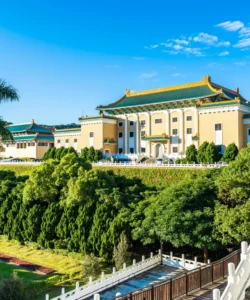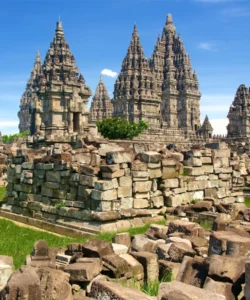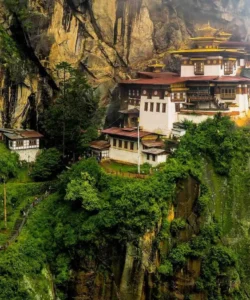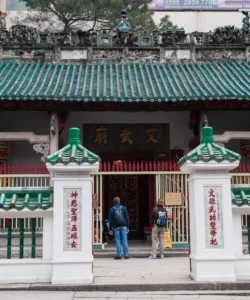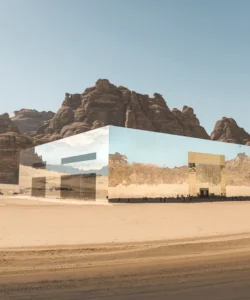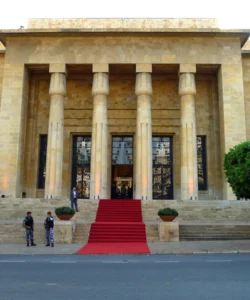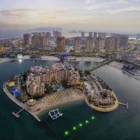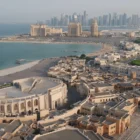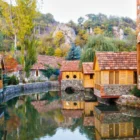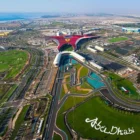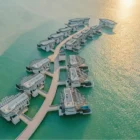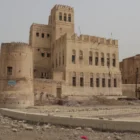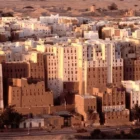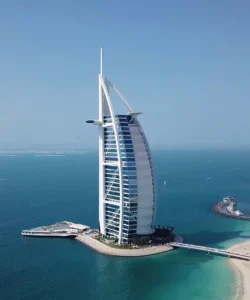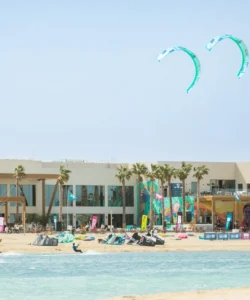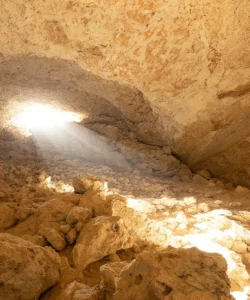The Burj Al Arab Jumeirah (Arabic: برج العرب, “Tower of the Arabs”) is a global icon of Arabian luxury and one of the most famous hotels in the world. Opened in 1999, it was designed with the ambitious goal of creating a landmark that would be to Dubai what the Eiffel Tower is to Paris. Soaring 321 meters (1,053 feet), its unique and visionary architecture has made it a symbol of the city’s transformation and ambition. More than just a hotel, the Burj Al Arab is an all-suite marvel of modern engineering and opulent design, renowned for a level of hospitality that has set new standards in the industry.
Listen to an introduction about Burj Al Arab Jumeirah
Name and Address
- Name: Burj Al Arab Jumeirah.
- Address: Located on its own man-made island, off Jumeirah Street, Umm Suqeim 3, Dubai, United Arab Emirates.
How to Get There
The Burj Al Arab’s exclusivity extends to its access, which is reserved for guests and those with reservations.
- By Car/Taxi: The hotel is reached via a private, curving causeway that connects its artificial island to the mainland. The journey from Dubai International Airport (DXB) takes approximately 25-30 minutes. The hotel offers a fleet of chauffeur-driven Rolls-Royces for guest transfers.
- By Helicopter: For the ultimate arrival experience, the Burj Al Arab features a helipad located 212 meters (696 feet) above sea level, near the roof of the structure.
- Public Access: General public access is not permitted. To enter the island and the hotel, you must have a suite reservation or a dining reservation at one of its acclaimed restaurants. Guided tours are also available for booking, which grant access to specific areas of the hotel.
Landscape and Architecture
The hotel is a masterpiece of architectural ingenuity and landscape engineering, creating a dramatic silhouette against the Dubai coastline.
- Man-Made Island: The Burj Al Arab stands on a purpose-built artificial island, located 280 meters (920 feet) offshore. The construction of the island itself was a monumental feat of engineering, taking two years to complete and requiring 250 concrete piles driven 45 meters under the seabed to secure the foundation.
- Architectural Style & Design: Designed by architect Tom Wright of Atkins, the building’s shape is famously modeled on the billowing sail of a dhow, a traditional Arabian sailing vessel. This design pays homage to the seafaring heritage of Dubai. The structure consists of two “wings” spread in a V-shape to form a vast “mast,” creating an enormous, 180-meter (590 ft) tall atrium inside—the tallest of its kind in the world.
- Exterior Features: The side of the building facing the coast is covered in a double-skinned, Teflon-coated woven glass fiber screen. This translucent facade is dazzling white during the day and is used as a canvas for spectacular light shows at night. The iconic helipad has famously hosted high-profile events, including a tennis match between Andre Agassi and Roger Federer.
- Interior Design: The lavish interior was designed by Khuan Chew of KCA International. The decor is a vibrant and opulent celebration of Arabian luxury, featuring a palette derived from the elements of earth, air, fire, and water. Over 1,790 square meters of 24-carat gold leaf were used to embellish the interiors, and approximately 24,000 square meters of Statuario marble—the same type used by Michelangelo—adorn the walls and floors.
What Makes It Famous
The Burj Al Arab’s fame is built on its groundbreaking architecture, its reputation for unparalleled luxury, and its status as a symbol of modern Dubai.
- The “Seven-Star” Hotel: Although the hotel’s management does not use the term, the Burj Al Arab is widely referred to as the world’s only “seven-star” hotel. This unofficial title originated from a journalist who visited during its pre-opening, attempting to capture the hotel’s unprecedented level of luxury.
- All-Suite Duplex Accommodation: The hotel does not have standard rooms. It exclusively features 199 luxurious duplex suites, ranging from 170 sq. m (1,830 sq. ft) to 780 sq. m (8,400 sq. ft). Each suite spans two floors and comes with a dedicated team of eight staff members and 24-hour private butler service.
- Iconic Architecture: Its sail-shaped silhouette is instantly recognizable and has become a definitive image of Dubai, representing the city’s ambition and innovation.
- World-Class Dining: The hotel is home to several award-winning restaurants, including the Michelin-starred Al Muntaha (“The Ultimate”), which is suspended 200 meters above the Arabian Gulf, and Sal, a chic beach club and restaurant on “The Terrace.”
- The Terrace: An extraordinary feat of engineering, The Terrace is a man-made luxury beach facility that was built in Finland and transported to Dubai by sea. It extends out from the base of the hotel and features two pools, a man-made beach with 1,000 tonnes of white sand, and air-conditioned cabanas.
Differences from Other Wonders
The Burj Al Arab distinguishes itself from other luxury hotels and global landmarks in several key ways:
- Pioneering Engineering: Unlike most hotels, which are built on land, the Burj Al Arab’s construction on a dedicated artificial island was a groundbreaking achievement that set new precedents in engineering and design.
- Symbolic Architecture: While many hotels are luxurious, few have an architectural form that is so deeply symbolic of their location’s heritage. The dhow sail design is a powerful and elegant tribute to the region’s history.
- Exclusively Suites: The all-suite concept, where every accommodation is a multi-level duplex, is extremely rare and places it in a different category from hotels that offer a mix of rooms and suites.
- Unparalleled Bespoke Service: The staff-to-suite ratio of eight-to-one and the dedicated 24/7 butler for every suite provides a level of personalized service and privacy that is almost unmatched in the hospitality industry.
- A Destination in Itself: The Burj Al Arab is more than just a place to stay; it is a tourist destination in its own right. Its fame is such that access is restricted, and people book dining reservations or tours simply for the opportunity to see inside, a practice not common for most other hotels.
Burj Al Arab Jumeirah Photos:
































